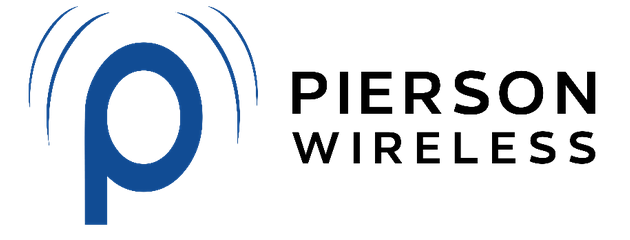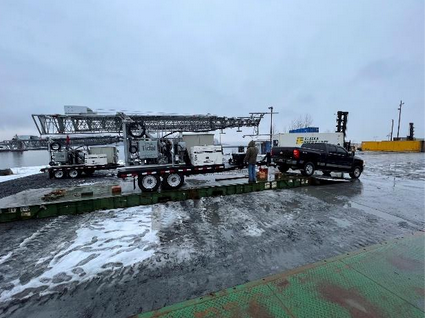 To the Central Council of the Tlingit and Haida Indian Tribes of Alaska (Tlingit & Haida), connectivity means everything — from sovereignty and economic development to stronger communities through healthcare, public safety, government services, and education. In Wrangell, Alaska, situated 155 miles south of Juneau, the tree-covered mountainous island is both beautiful and isolated.
To the Central Council of the Tlingit and Haida Indian Tribes of Alaska (Tlingit & Haida), connectivity means everything — from sovereignty and economic development to stronger communities through healthcare, public safety, government services, and education. In Wrangell, Alaska, situated 155 miles south of Juneau, the tree-covered mountainous island is both beautiful and isolated.
Omaha-based Pierson Wireless is solving their connectivity issues by bringing a turnkey outdoor private 5G network solution to their remote island, with a population of 2,127, only accessible by boat or plane.
“We’re helping people who have no or very limited high-speed internet access,” said Ted Cox, Senior Director, Advanced Solutions and Development at Pierson Wireless.
The venture is the latest in a series of private network projects featuring a technology alliance between Pierson Wireless and Nokia that was initially formed to create a trio of private network solutions for Texas-based school districts that needed creative solutions to connect students during the pandemic.
The Wrangell Project
Tlingit & Haida will own and operate the 5G private network, known as the Tidal Network. It will use Band 41 frequencies granted by the FCC through the Rural Tribal Priority Window that provided federally recognized Tribal entities with an opportunity to apply for unassigned 2.5 GHz spectrum. The network will use frequencies in the Citizens Broadband Radio Service (CBRS) as well.
In January 2023, two temporary networks on wheels (NOWs) were delivered by barge for the first phase of the project. The NOWs were equipped with a Nokia/Radio Access Network, evolved packet core, and microwave backhaul gear, which were tested in the Pierson Wireless lab in Charlotte, NC in October 2022. Each NOW and fixed site is outfitted with a generator for use either as the backup energy source, or for primary when the portable NOWs are being used in an area without shore power. The NOWs, which can extend to 120 feet, are capable of up to three separate RAN sectors. They are capable of being a standalone network each, or combined into one depending on the deployment need. Deployment will occur later this year when weather permits.
The NOW is being unloaded from the barge in Wrangell, AK
Pierson Wireless is using a phased approach in the Tlingit & Haida project. The NOWs will provide immediate connectivity to the region while the permanent towers are built. The NOWs will be redeployed as needed for projects in other southeast Alaska communities, when the Wrangell permanent network is finalized, according to Chris Cropley, Tidal Network Director at Tlingit & Haida.
Pierson Wireless has been instrumental in providing guidance and know-how to design and build solutions to provide broadband access, says Cropley. “They are a great partner that is invested in our success and mission. We looked at each of the 22 communities’ sets of assets and challenges. Some have fiber middle mile, some have none, some are spread out with a road system and others are on a boardwalk with less than 50 households. We selected vendors based on capabilities both current and road mapped that are best of the breed.”
The NOW deployment timelapse video
The deployment at Wrangell will be funded by the Coronavirus Aid, Relief, and Economic Security Act, also known as the CARES Act, the American Rescue Plan Act, The Tribal Broadband Connectivity Program, Bureau of Indian Affairs, Tribal Broadband Connectivity Program, and the FCC’s Affordable Connectivity Program, according to Cropley. There is not yet a rate sheet for the service but Cropley envisions one or two free-to-discounted tiers.
Users will be able to access the towers via a SIM card-enabled device and fixed wireless access device at their home or business, which can interface with WiFi gateways or wired LAN bridge devices to provide additional connectivity beyond the SIM enabled device. The traffic from those sites is then backhauled to the network core primarily via fiber, if it is cost effective, or by using microwave or Starlink low earth orbit (LEO) satellites.
A hybrid fiber/wireless approach is best for this specific project in Wrangell, as well as many others Pierson Wireless is currently supporting across the country, because it not feasible to deliver fiber to each and every end user location.
The Planning
The rugged, tree-lined mountains in islands off mainland Alaska make RF propagation a challenge. Pierson Wireless Design Engineer Jessie Rico procured high-resolution, 3D geological data that shows granular information on the terrain, the ground elevation, the tree heights, the density of the trees, and the location of the houses.
“The narrative of everything we do with Tidal Network is about adaptability to the ever-changing environment that our equipment is in,” Jessie said. “The density of the trees, 150-year-old pines, allows us to optimize our RF prediction models to account for that type of foliage.”
Jessie spent time in Alaska, taking several bush plane flights with tribespeople to look at the territory from overhead. GoPro cameras were strapped to small planes, which provided 4k video with geolocation information. Since Google Earth Street View was not available, they also used GoPros on cars and drove the streets. As a result, they could develop a multifaceted set of tools to understand the area.
“We had to procure customized geo data to validate that the actual data that’s in the RF design software is accurate,” Jessie said. “Understanding the RF environment is what led us to provide the NOW system with over 100-foot masts. It also gives us enough information about the environment to know where we want to place new towers and where to use existing towers.”
After covering Wrangell, Pierson Wireless will move on to deploy in Sitka, which is another prominent community nearby, using the same collaborative approach.
“The biggest challenge of working in rural Alaska is creating a solution that is adaptable for all circumstances,” Ted said. “But working very closely with the native tribes allows us to learn together and to develop a unique approach for each project.”
For more information, contact Pierson Wireless at [email protected].
By J. Sharpe Smith, Inside Towers Technology Editor




Reader Interactions